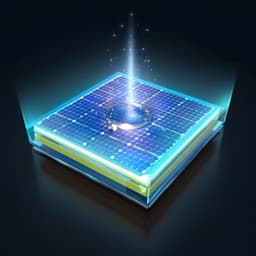
Engineering and Technology
Machine learning driven performance for hole transport layer free carbon-based perovskite solar cells
S. Valsalakumar, S. Bhandari, et al.
Discover a cutting-edge five-step methodology for implementing machine learning models in fabricating hole transport layer-free carbon-based perovskite solar cells. This research, conducted by Sreeram Valsalakumar, Shubhranshu Bhandari, Anurag Roy, Tapas K. Mallick, Justin Hinshelwood, and Senthilarasu Sundaram, reveals how an ANN-based model achieves remarkable predictive accuracy, enhancing optimization and understanding of device parameters.
~3 min • Beginner • English
Related Publications
Explore these studies to deepen your understanding of the subject.







